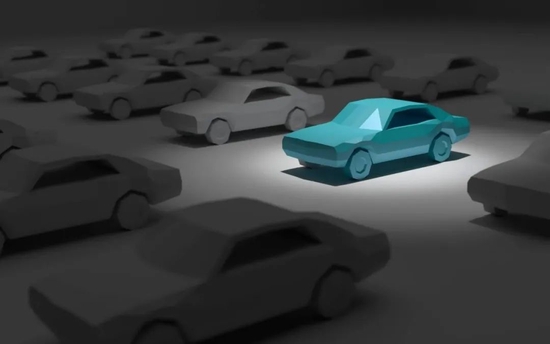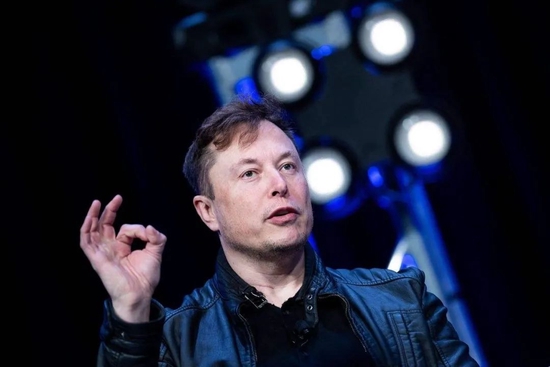
Welcome to the WeChat subscription number of “Sina Technology”: techsina
Source: Tao is always justified
Recently, star Lin Zhiying had a car accident, pushing Tesla to the forefront again.
At around 10:00 a.m. on July 22, Lin Zhiying drove a Tesla Model X. On a section of the road in Luzhu District, Taoyuan, Taiwan, it hit the dividing island in the middle of the road. Then the car caught fire, and the front of the car burned into a pile of scrap iron. . Judging from the photos circulating on the Internet at the time, it seems that the situation was tragic, but fortunately, the father and son are not seriously injured at present.
Since 2022, new energy vehicle accidents have continued. According to the fire accident data of new energy vehicles in the first quarter of 2022 released by the Ministry of Emergency Management of the People’s Republic of China, there were 640 new energy vehicle fire accidents in the first quarter of this year. Compared with the same period last year, the number of new energy vehicle fire accidents in the first quarter increased by 32%. There were more than 7 cases. However, this did not have much impact on the sales of new energy vehicles. In the first half of the year, the sales trend of new energy vehicles overwhelmed traditional fuel vehicles.
In fact, not only sales, but in the mouths of new energy car companies and car owners, new energy has “crushed” fuel vehicles in an all-round way.
Before Li Xiang’s “ideal L9 is the best family flagship SUV within 5 million”, He Xiaopeng’s “Xpeng G9 chassis handling can be comparable to Porsche Cayenne, and the NVH of the whole vehicle can be comparable to GLS Maybach”, only selling cars without making cars Huawei also vowed to shout “Wenjie M7 is the best SUV within a million”.
In the industry, new energy vehicle companies do not seem to be able to sell cars seriously without stepping on fuel vehicles. What is even more embarrassing is that since 2014, the battle between new energy vehicles has not stopped, but it is still Stay with the mouth, not the technology.
“Blowing” out of the tuyere
In 2014, Musk said that by 2020, self-driving systems will become advanced enough that “you can literally get in the car, fall asleep, and wake up at your destination.” At that time, Autopilot was only an L2-level autonomous driving system, strictly speaking, an assisted driving system, but Musk’s upper lip touched his lower lip, an attractive enough story, which blew the technological content and height of new energy vehicles. sky.

Of course, the rise of new energy cannot be entirely attributed to Musk. In 2014, my country launched a total of 16 new energy vehicle policies, including exempting purchase tax, clarifying the proportion of new energy vehicles in new public vehicles, and breaking local protectionism, which greatly assisted the promotion of new energy vehicles.
This year, my country’s new energy vehicles showed explosive growth, which was designated as the first year of commercialization of China’s new energy vehicles by the industry. mushroomed into the market.
Regardless of whether it is done or not, first blow the bull out. This is what the new domestic car-making forces learned from Musk at first. For example, in the past few years, before the new energy car companies delivered and mass-produced, the founders competed to “paint cakes”: Jia Yueting held the car frame at the press conference and said that LeTV would become a company that surpassed Apple. Li Bin, Li Xiang , He Xiaopeng, the delivery date has been announced many times, the delivery date has been delayed again and again, and consumers are exhausted from waiting.
The first war of words for new energy vehicles revolved around delivery. In 2018, Li Bin announced that 10,000 units of the founding ES8 would be delivered before September. He Xiaopeng immediately sneered in the circle of friends, saying that “there is no new car company that can deliver 10,000 units this year.” For this, the two made a bet. In the middle, Li Xueling also stepped in to support He Xiaopeng.
No one wins or loses in this confrontation. Weilai, Xiaopeng Motors, and other popular brands have won the attention of public opinion and capital through betting, adding a topic to the battle for the delivery of new energy vehicles.
Later, once the delivery threshold was passed, production capacity and delivery data became secondary. Because consumers began to pay, they were most concerned about whether the vehicle performance was good or not, so new energy vehicle companies turned to boasting the performance of their own vehicles. . But how to let consumers intuitively feel how good the performance of their own vehicles is? Naturally, it is a comparison. If you hold one and step on one, you will have a “gap” and a “sense of superiority”.
Taking a closer look at Wei Xiaoli, He Xiaopeng is the most scolded person. Looking around the companies that make new energy vehicles, he has almost never been scolded by him. Especially when the events are the hottest, he likes to come out and comment on two sentences and contradict others; Li Bin is opposite. It was a little milder, but suddenly came the classic phrase of pulling and stepping on a fuel car—except for the smell of gasoline, what else is good about a fuel car—it surprised netizens; Li Xiang didn’t want to go with Weilai and Xiaopeng Motors. In the same marketing way, he prefers to talk about feelings, and when the new car was released some time ago, the phrase “the best family SUV within 5 million yuan” has refreshed the new height of “bragging” by car companies.
Boasting, touching porcelain, pulling and stepping… The fire of new energy car companies is aimed at fuel vehicles and Tesla, because although the bosses are not used to each other, they know that the overlord of fuel vehicles and Tesla are their common of two enemies.
However, netizens have a doubt. Car companies like to seek a sense of existence by pulling and stepping in the digital range of hundreds of thousands to millions, but they rarely publicize the core technology so carefully. In the past eight years, this point seems to have never changed, and it is also suspicious. Maybe behind the “roll” marketing of new energy vehicle companies is to cover up technical inaction?
“Boring” technical introversion: modeling, large screen, intelligent scene…
The ideal L9 just became popular with Li Xiang’s words, and He Xiaopeng immediately pointed out in an interview, saying that he “firmly opposes having many screens in the car”. Although the war has not yet started, people with discerning eyes can smell the smoke of gunpowder, but aside from competition, He Xiaopeng’s opposition has indeed raised doubts in the industry about the pursuit of large and multi-screen new energy vehicles.

Judging from the newly launched models in the past two years, the on-board display screen has not only become larger and larger, but also multi-screen has become a trend. For example, the ideal L9, not only the central control screen and the passenger entertainment screen are both 15.7-inch OLED screens, but also a 15.7-inch small TV on the roof, and even an interactive screen on the steering wheel; another example is SAIC Roewe, for its new model RX5 specially held a smart cockpit conference, introducing its world-first “27-inch unbounded panoramic sliding large screen”.
Despite the voices of opposition, it seems that it has become a mainstream of new energy vehicles to plug larger and more screens into the car, and even gasoline vehicles such as Mercedes-Benz and BMW have begun to follow and roll in each other.
But the screens are getting bigger and bigger. Does it make sense for technological innovation in the new energy vehicle industry? To put it bluntly, almost none. On the one hand, car companies are only using large screens or multiple screens as a means to impact high-end and increase premiums, not only consumers do not need it, but car companies seem to ignore the safety hazards brought by entertainment scenes; an ideal car owner said that , the screen in the L9 car is too large, it just increases the cost of buying a car.”
Second, before automatic driving is realized, this is more like a gimmick for car companies to forcefully increase the content of intelligence. In other words, these shallow-level intelligent innovations cover up the stagnation of research and development of autonomous driving technology;
Over the years, the technological “competition” between new energy vehicle companies seems to always stay in some places that lack practical significance. From the appearance to the screen to the intelligent scene, the real technical content is very little, but they always like to over-stack, out of user needs.
Taking the intelligent scene as an example, whether it is multi-screen, VR/AR or projection, new energy vehicle companies are using the stacking of these hardware to convey the concept of “third space” to consumers, telling us that in the future, the car can be used in the car. It can realize the entertainment of watching movies, playing games and watching ball games. We have also seen that although the three brothers “Wei Xiaoli” have been fighting over the issue of having several screens in the car, they have already rolled up in the field of smart cockpits.
However, an overlooked problem is that the intelligence of automobiles depends on computing power. The basis of computing power lies in chips. Car companies are busy arranging the scene, but they have not rolled it to the car chip.
my country’s automotive chip market has long relied on imports, and the import rate is as high as 95%. Key chips such as powertrain, chassis control and advanced driver assistance systems are monopolized by foreign giants. NXP, Infineon, Renesas Electronics, Texas Instruments and STMicroelectronics and other top 5 semiconductor manufacturers in the world, occupying about 50% of the market share.
As early as the era of vigorous development of fuel vehicles, the problem of my country’s auto industry’s dependence on American cores has been realized, but at the moment when new energy vehicles plan to overtake on curves, this problem has not been solved. Although Wei Xiaoli announced that he would start to develop its own chips, it is currently limited to edge chips, not core chips.
Ordinary car chips are still like this, can autonomous driving chips still have hope?
Battery technology dazzles, and safety never settles
“The cost of power batteries has accounted for 40%~50%, or even 60% of new energy vehicles, so am I not working for the Ningde era now?” Zeng Qinghong, chairman of GAC Group, asked a question that became a part of the 2022 World Power Battery Conference. The most controversial topic.
Not to mention whether this pot should be thrown at the price of upstream raw materials soaring, power batteries have indeed always accounted for a large proportion of the cost of the whole vehicle, and the cost of batteries has not been reduced for such a long time. The data shows that the cost of the traditional fuel vehicle powertrain system accounts for about 25% of the entire vehicle, while the three-electric system of the new energy vehicle accounts for 52% of the entire vehicle cost, and the battery system accounts for the highest cost, reaching 38% of the entire vehicle.
The core force driving technological progress in the new energy vehicle industry is not actually car companies, but battery suppliers such as CATL. However, the current power battery technology seems to be “blooming”, which is actually similar to the technically awkward situation of car companies. Big, small raindrops, none of the core problems have been solved.
Cost is one, and safety is another. Since the birth of electric vehicles, people have been most worried about safety issues, but today, accidents are more and more frequent. According to the data of the car quality network, the number of complaints related to “automobile spontaneous combustion” has grown rapidly in the past three years. After a 10-fold year-on-year increase in 2020, there will be another surge in 2022, reaching 9 cases in the first half of the year alone.

Fear of freezing in winter and sun exposure in summer, car owners tremble every time they see reports of new energy vehicle accidents.
In the early stage of the development of new energy vehicles, lithium iron phosphate batteries have always occupied the mainstream position, with the highest installed capacity reaching 70%. Then, in order to improve the cruising range, the penetration rate of high energy density ternary lithium batteries increased rapidly, suppressing iron phosphate to a certain extent. Lithium in passenger cars. However, with the breakthrough of CTP and blade technology, the volume energy density of lithium iron phosphate batteries has been improved. In the past two years, lithium iron phosphate batteries have begun to pick up.
Compared with ternary lithium batteries, lithium iron phosphate batteries have more advantages in terms of cost, safety, and cycle life. After going around, battery technology seems to have returned to the original route. Lithium iron phosphate batteries improve energy secrets, but problems such as poor low temperature performance, weak fast charging capability, and difficulty in battery management system (BMS) control are still plaguing battery manufacturers.
Moreover, the south is extremely hot this year, and new energy vehicle owners can’t believe the stability of lithium iron phosphate batteries. A car owner who bought a pure electric vehicle equipped with a lithium iron phosphate power battery said that since he saw some new energy vehicles with spontaneous combustion accidents in the first half of the year, the vehicles are also known for their safety and claim to not be “out of control”. After using the lithium iron phosphate battery, he no longer dared to park the car in the parking lot without restraint and let the sun shine.
At present, both battery suppliers and car companies planning to develop their own batteries have launched new battery technology concepts, such as Kirin batteries, 4680 batteries, blade batteries, etc., which brings an illusion to the market and consumers. There are many solutions to many problems, which may not be able to enter the application from the concept, and need time to verify.
The recognition, development and maturity of new things take time, so we should give more time to new energy vehicles, but the current industry common problem is that many problems have not been solved, but they deliberately tout new energy vehicles.
When expectations are raised higher, the greater the disappointment may be.

(Disclaimer: This article only represents the author’s point of view and does not represent the position of Sina.com.)
This article is reproduced from: http://finance.sina.com.cn/tech/csj/2022-07-28/doc-imizirav5775653.shtml
This site is for inclusion only, and the copyright belongs to the original author.